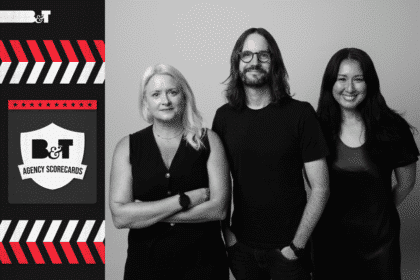Australians are showing signs of greater optimism about a COVID-19 recovery, with less people saying it will have a big impact on their personal finances and most expecting to delay purchases until the pandemic is over, a landmark new study from Audience Precision has found.
The ongoing global study*, called “COVID-19 – Marketers Action Plan”, is the first of its kind to look at trends spanning generations, from Generation Z to Boomers, and also across the top 25 per cent household income band, which reveals very different attitudes towards COVID-19 and spending patterns.
Gen Z are the most ready to spend up big as soon as the pandemic is over in Australia but have delayed their purchases until then, while Boomers are not delaying purchases to any significant degree. Millennials are the most cautious, becoming the ‘wait and see’ generation.
In Australia, all generations are less concerned and more optimistic about COVID-19 than the UK and US. Gen Z are the least concerned across all generations, along with Boomers, who also have the highest levels of optimism. High income earners are also the most optimistic but the second most concerned about COVID-19.
In terms of personal finances, Millennials have the lowest level of optimism, with 40 per cent saying COVID-19 will have a major impact on their personal finances, the highest of all generations.
Gen X were the second highest generational group to say COVID-19 will have a major impact on their personal finances (38 per cent), and 36 per cent of Boomers believe the same.
“This is the third wave of our ongoing COVID-19 research study, and we are finding that Australians are more generally optimistic. This represents a massive opportunity and brands need to capitalise on this momentum of positivity. Although across generations most will delay their purchases, they are ready to spend once the pandemic is over,” Audience Precision head of business development John La Rosa said.
“These are very encouraging signs for marketers and this further highlights the need to be ready to accommodate a surge in expenditure. It’s important to start to brand build now to ensure awareness is achieved prior to full pre-COVID-19 conditions. Marketers need to have agile and quickly executable strategies ready for further signs of a speedy recovery.
“There are key cross generational differences, however, which have major implications for marketers and brands. Although people approve of normal advertising, there are some shifts in expectations. Having a deep understanding of what your consumers’ wants and needs are will drive repeat purchase and build longer term brand loyalty, as we know that they will choose brands based on past experiences.”
Purchase category delays
The study also looked at 11 purchasing categories^ across generational groups with some diverse results when asked about which purchases they would most likely delay until the pandemic was over:
- Gen Z: technology items, luxury items, clothes, flights and concert tickets
- Millennials: cars, home appliances, clothes, tickets to events, luxury items
- Gen X: day to day items, vacations, concert tickets, cars, home appliances, sporting events
- Boomers: day to day items, vacations, flights, sporting events, concert tickets.
Among the top 25 per cent income band, holidays, flights, cars, luxury items and home appliances were the top five categories that were most likely to be delayed.
Purchase category priorities post-COVID-19
For younger audiences, fashion, smartphones and home appliances are high on their radar. As for the older generations, clothes, home appliances and home furnishings are in demand.
In terms of higher priced items, the top 5 categories that each generation and top income band will buy first are:
- Gen Z: Clothes, smartphone, home appliances, luxury goods and smart devices
- Millennials: Clothes, technology, smartphone, home furnishings and smart devices
- Gen X: Clothes, home appliances, home furnishings, technology and smartphone
- Boomers: Home appliances, clothes, home furnishings, technology and smartphone
- Top 25 per cent income band: Clothes, home appliances, technology, home furnishings and smartphone
Approval of marketing techniques during COVID-19
When looking at people who were planning to purchase specific major products and their approval of brand advertising techniques, normal advertising is more acceptable for experiences, flat screen TVs, mortgage/finance brands and wearable devices, which are all products that are relevant to lockdown/isolation, or they are aspirational products. However, normal advertising has taken a dip for gaming, automotive, gym equipment and holidays.
When looking at people who purchase minor products, most categories would benefit from normal advertising during this period (excluding books, health foods, skincare and sports apparel). It shows that the shorter purchase decision cycle and lower priced goods have more minimal impact from regular brand advertising.
Approval of marketing techniques across media channels during COVID-19
There is considerably more acceptance and approval for running regular advertising for Out-of-Home advertising, possibly due to anticipated lockdown laws easing.
Consumers expect ads on messaging apps, video pre rolls, ads on tablets, website advertising, sponsored content, retail sites and comments on social media to stay both informed and connected in these times.
Ad placements in channels that fill a consumer’s need have become more widely accepted.
Price and locally made being key motivators for consumers to purchase brands again, along with previous brand experience. This is evident particularly for Gen X, Boomers and high income groups. Interestingly, the brands that reached out to the consumer via CRM programs are not looked upon overly favourably. Brands that had a positive brand image and were seen to be supportive and helpful delivered greater cut through than brands that were not.
Spending time with media channels and social media
Across traditional channels, most Australians have spent the most amount of time with broadcast television during COVID-19 restrictions across all generations, followed by reading more books and audio books, listening to radio, reading more newspapers and reading more magazines.
Gen Z are least likely to engage with traditional media channels, instead opting for digital and social feeds as their preferred source of news and entertainment.
Across digital channels, streaming content (SVOD and BVOD) and listening to music streaming services were most popular across all groups, followed by watching more videos (such as YouTube), listening to podcasts and creating videos (such as Tik Tok).
Unsurprisingly, Boomers are the least engaged and interactive with these platforms, instead opting for what they know and trust for their content preferences through traditional channels.
All groups are spending more time on social media channels. Most are watching more news coverage on social media channels, followed by spending longer on messaging services, spending more time on computer/video games and spending more time on apps.
Sources:
*Methodology: To identify attitudes and behaviours during the COVID-19 outbreak, the study was conducted by Audience Precision’s research partner GlobalWebIndex in 17 countries with research in field from 22 to 27 April. It included a sample size of 1,073 Australians who are internet users aged 16 to 64.
^ The 11 purchase categories are: clothes, home appliances/devices, home furnishings, insurance, luxury items, personal electronics, smartphone, technology/smart devices, cars, flights and vacations/trips.








